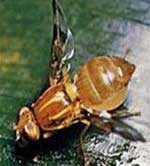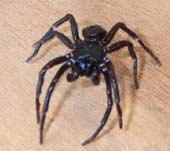An invasive ant species capable of secreting harmful formic acid is threatening native wildlife in Texas.
Originating from Argentina and Brazil, the Tawny Crazy Ant (Nylanderia fulva) has “hitchhiked” across oceans to reach the United States and is rapidly multiplying. They are invading new territories in Texas, exterminating insects and lizards, displacing birds, and even blinding baby rabbits by spraying acid into their eyes.
Nylanderia fulva is called the Tawny Crazy Ant due to its erratic movement, which is unlike the “orderly march” of its relatives. Although it lacks the venom of fire ants, the Tawny Crazy Ant can secrete formic acid to defend itself against predators or impair the reproductive capabilities of native animals.
“It’s a horrific sight,” said ecologist Edward LeBrun, who described the invading crazy ant colonies in Estero Llano Grande Park in Texas, to AFP. “They are not only destroying ecosystems but also disrupting human lives.”
Nylanderia fulva tends to nest in electrical systems, causing circuit failures, air conditioning malfunctions, and issues with sewage pumps. Some control measures for the crazy ants, including the application of highly toxic pesticides, have been implemented, but these only slow their growth rather than eradicate them completely.

Tawny Crazy Ant eating a cricket. (Photo: AFP)
However, in a study published on February 28 in the Proceedings of the National Academy of Sciences, researchers at the University of Texas at Austin have brought some good news. They discovered a naturally occurring fungal pathogen that could reverse the rampant invasion of crazy ants across the southeastern United States.
This fungus is known as Microsporidia. It can hijack the fat cells of insects and turn them into “factories” for producing spores. The origin of the pathogen is unclear; it may have come from South America or from another insect species.
While studying the crazy ants they collected in Florida, LeBrun and his colleague Rob Plowes accidentally discovered some individuals with unusually swollen abdomens due to fat. The primary cause was Microsporidia.
The research team observed 15 populations of crazy ants over several years and found that every population containing the pathogen experienced a decline in numbers, with up to 60% completely extinct.
In one experiment, the research team decided to place infected ants with healthy ones in the same nesting area within the park, placing sausages around the escape openings of a box to lure the two colonies to merge.
These ants then formed a “super colony”, meaning that the distinct groups did not fight each other for territory. This is a significant advantage when crazy ants invade new areas, but it also became their greatest weakness, as it allowed the pathogen to spread unchecked.
The experiment was a resounding success, reducing the number of crazy ants in the park to zero within a few years. Larvae cared for by infected worker ants appeared to be very vulnerable.
In the next phase, the team will continue testing their new biological control method in sensitive habitats across Texas this spring.





















































